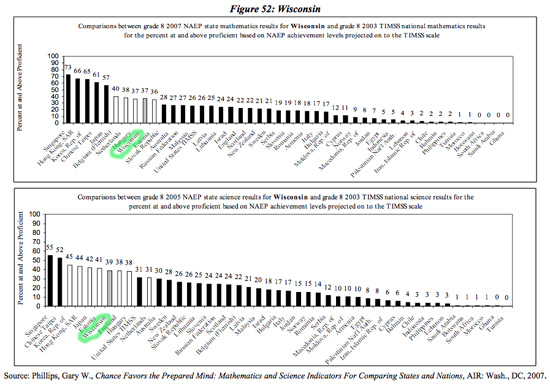Two of our overriding efforts in Lower Education in recent years have been: 1) raising the low math and reading scores of black and Hispanic students, and 2) increasing the number of our high school and college graduates capable of employment in Science, Technology, Engineering, and Mathematics [STEM}.
Very recently evidence has been allowed to surface pointing out that while students in the bottom 10% of academic performance have indeed improved, students in the top ten percent of academic performance have stagnated, where they have not dropped out from boredom. Related evidence now suggests that complacency with secondary public education in our more affluent suburbs may have been quite misplaced as well.
As Thomas Friedman and Michael Mandelbaum point out in their recent book, That Used To Be Us, “average is over.” That is to say, students in other cities (Singapore, Hong Kong, Shanghai) and countries (Finland, South Korea, Japan) take their educations so much more seriously than our students (and teachers) do that their economies are achieving gains on our own that are truly startling, if we take the time to notice.
If we are to retain good jobs, restart our manufacturing, and otherwise decide to compete seriously with others who seem to take both education and work more seriously than we have come to do, it might be wise to increase the interest of our students in STEM fields. According to the Kaiser Foundation, our students aged 8-18 are spending, on average, more than seven hours a day with electronic entertainment media.
Now of course we want our young people to buy our electronic entertainment hardware and software and we definitely want them to have a good time and be happy, but probably we would like them to be employable some day as well. Friedman and Mandelbaum point out that not only blue collar jobs and white collar jobs, but increasingly sophisticated professional work can be done to a high standard at a much lower cost in other countries than it can be done here.
Having our students spend 53 hours a week on their electronic entertainment media, while their high school homework tops out, in many cases, according to ACT, at three to four hours a week, is not a plan that will enable us to resume our competitive position in the world’s economies.
So perhaps we should assign students in high school 15 hours a week of homework (which would reduce their media time to a mere 38 hours a week) and pass on to them the information that if they don’t start working to a much much higher academic standard they will probably face a more depressing future in a greatly diminished nation than they currently imagine they will have.
But, is STEM enough? I remember the story told about a visit Sir Alexander Fleming, who discovered penicillin, made to the gleaming new Salk Laboratory in La Jolla. A young biologist, thrilled to be a guide to the Nobel Prize-winner, was very proud to be able to show off all the bright new spotless expensive state-of-the-art research equipment. When they finished the tour, the young man could not stop himself from saying, “Just think, Sir Alexander, with all this equipment, what you could have discovered!” And Sir Alexander said, “not penicillin.”
Because the discovery of penicillin relied on serendipity and curiosity. Fleming found some petri dishes contaminated by something that had come in, probably, through one of the dirty old badly-closed windows in his lab in England. Instead of washing the dishes so he could start over with them, as most scientists would have done, he asked himself what could have killed off those bacteria in the dishes. And a major breakthrough was made possible.
Just in passing, amid the rush for more STEM, I would like to put in a word for serendipity, which often fuels creativity of many kinds, by making possible the association of previously unrelated ideas and memories when in contact with a new fact or situation not deliberately sought out.
I argue that serendipity is more likely to occur and to be fruitful if our students also have a lot of experience with the ROOTS of civilization, that is, the history, literature, art, music, architecture and other fields which have provided the background and inspiration for so much that we find worthwhile in human life. Steve Jobs found his course in calligraphy useful when he came to think about Macintosh software, but there are countless examples of important discoveries and contributions that have been, at least in part, grounded in the ROOTS of civilized life. So let us push for more STEM, by all means, but if, in the process we neglect those ROOTS, our achievements will be fewer, and our lives will be the poorer as a result, IMHO.
Will Fitzhugh
The Concord Review
